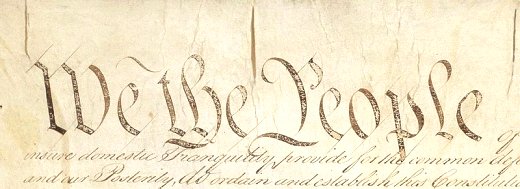

 Constitution Part 2
Constitution Part 2
The United States Constitution was drafted in 1787 by the Constitutional Convention consisting of 55 delegates from 12 of the original 13 colonies. All of the states sent delegates, except Rhode Island because they were worried about the Constitution taking away state's rights. The Constitutional Convention met with the idea that this document would instill and protect individual freedoms, which it does to this day.
Many notable Founding Fathers were involved in drafting the Constitution; some of the more memorable names were Benjamin Franklin , James Madison, and Roger Sherman. Benjamin Franklin* was known not only as one of the lead politicians of his day, but as a businessman and inventor who even invented musical instruments like the glass harmonica from glass bowls in various sizes. He epitomized the qualities of the idea American who worked hard but enjoyed the freedoms and opportunities of the new land.
The original 55 delegates met during May of 1787 and they met for 4 months to lay the foundation for the remarkable document: The Constitution. The four-month convention was one of the most important historical events that keeps the United States the great country that it is today. The original Constitutional Convention delegates had many ideas in mind when they created this document, which included:
Maintaining state rights so to preserve the way of life inside of their borders
Sustaining citizens' liberties
Guarding the citizens from threats from other countries
Creating the foundations of the Federal Government to ensure balance and avoid tyranny
To prepare a document that would satisfy all of the original 13 states, the delegates had to think, debate, and perfect the ideas they would eventually present. For four months, the men, ranging in age from 20 to 81, wrote, edited, revised, and polished the Constitution from the State House in Philadelphia, Pennsylvania. Benjamin Franklin was the eldest statesman in the group, while the other 54 delegates were chosen because they had stature in their home states as either land-owners, judges, lawyers, and business owners who were all very patriotic who had all held public office at some point in time. In keeping with the times, none of the delegates were women.
The Constitution took the place of the Articles of Confederation , because the Founding Fathers thought those articles were not quite right for the direction they wanted the country to take. In order to have the Constitution be as powerful as the country required, all of the states had to accept the document through the official ratification process. After ratification, the thirteen colonies would truly become the United States.
Leadership and the Great Compromise
When the Constitutional Convention organized, the group decided that they needed to have a leader along with rules to maintain order. The need in the Constitutional Convention for a democratic process helped create the democratic process that the Constitution actually prescribed. The Convention decided that George Washington would be the best choice to act as President, especially with his popularity from the Revolutionary War victory. He accepted the leadership role and the delegates respected his position; through his stature, he was able to maintain the rules of order and voting procedures. He also kept the discussion on track, so the process was as smooth as it could be. The delegates had to agree within their respective states before they could agree as a group. Out of the original 55 delegates, 39 were present for the signing, because of the difficulty of traveling and other issues during that time.
While the Constitution created the workings of the government and the states, there were some problems with representation from those states. The problem came from the fact that Congressional representation was based on the population of each state. Small states would not equal representation when compared to more populated states. But, if all states had the same number of representatives, the small states would then have the advantage.
Two plans were proposed. One was the New Jersey plan that proposed each state sent the same number of delegates to the federal government. The second plan, the Virginia plan, encouraged each state to send representatives based on the population of the state.
One delegate, Roger Sherman, from Connecticut, suggested that both plans be adopted so that small and large states would be equally represented. This proposal was the beginning of the House of Representatives and the Senate. The House contained the men who were representing the population of their respective states and the Senate contained two men from each state. This Great Compromise was the foundation of the United States Congress and it is still the rule of the land.
When the four months of working on the Constitution was completed, the final draft was hand written by Governor Morris from New Jersey. The 4,300 words were presented to the delegates who signed it. Once their signatures dried, the delegates worked very hard to get the states to ratify the document so it could be the rule of the land. There were a few other amendments that needed to be included before it would officially e the Constitution of the United States of America.
In the next lesson, we will learn more about the Bill of Rights, the first Amendments, and how the 3 branches of government were formed and balanced to maintain a free and powerful United States of America.
About the Authors: Aaron Schulman, a web developer and writer along with Sylvia Rausch owner of Fraley Cooper (Court Reporter Columbus Ohio) sponsored and co-wrote this 3 part article series for Garden Of Praise to help parents and young students learn more about the US Constitution and gain an appreciation for the Legal System of the United States.
*Benjamin Franklin also played musical instruments that evolved into acoustic guitars.

 Constitution Part 2
Constitution Part 2